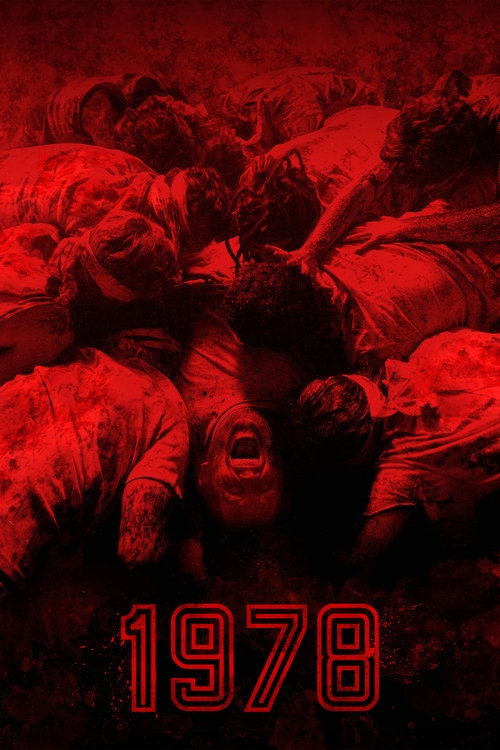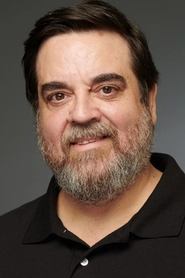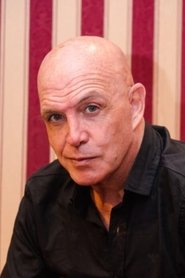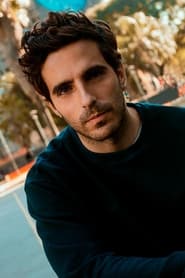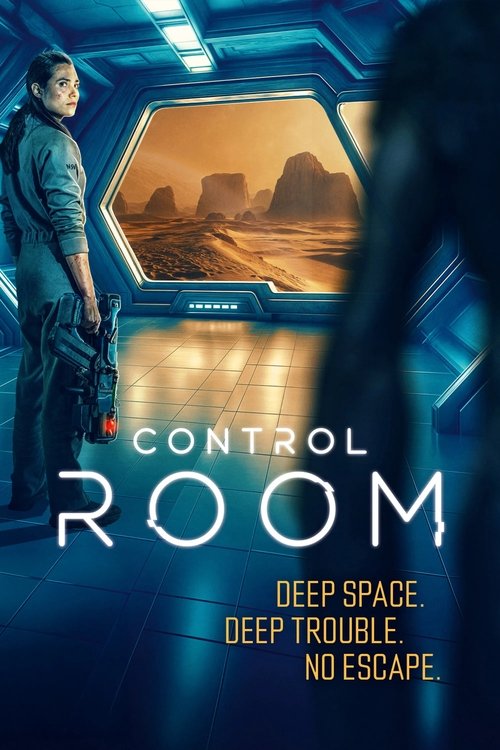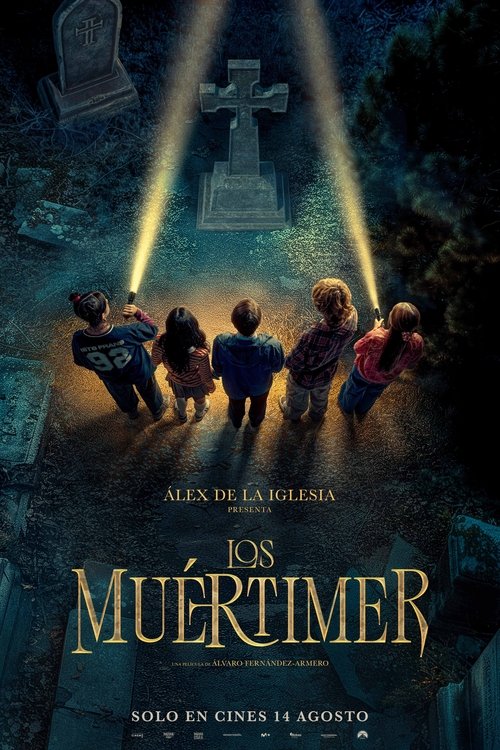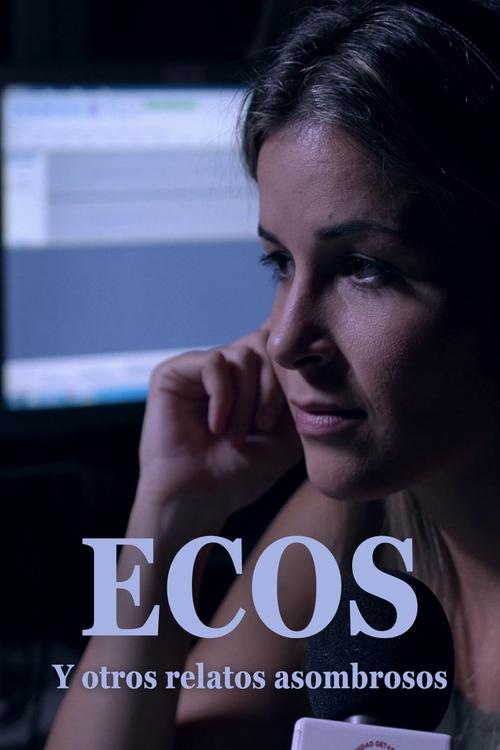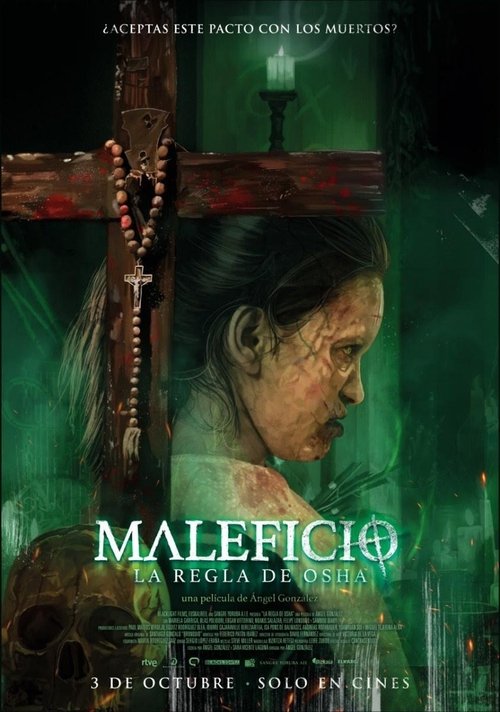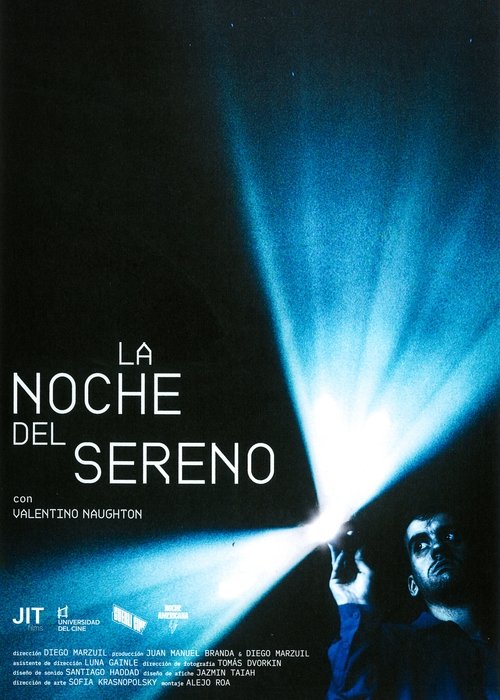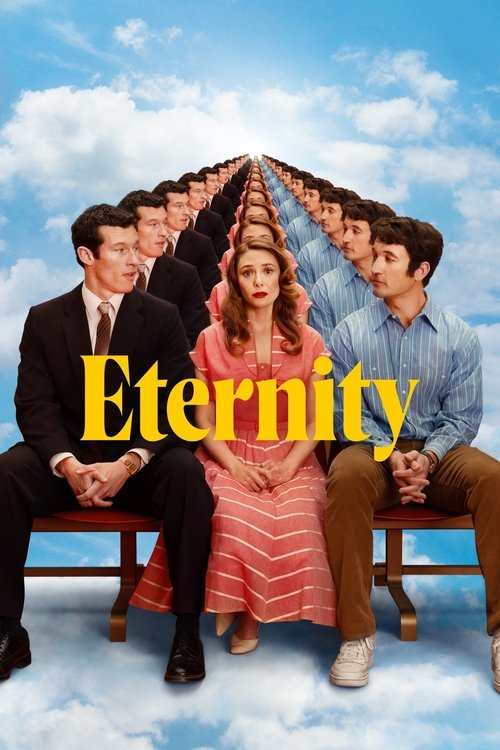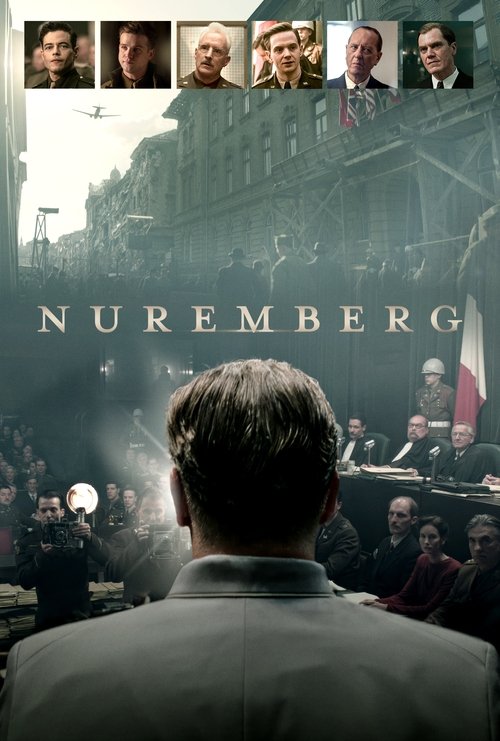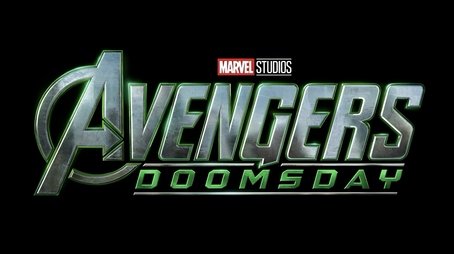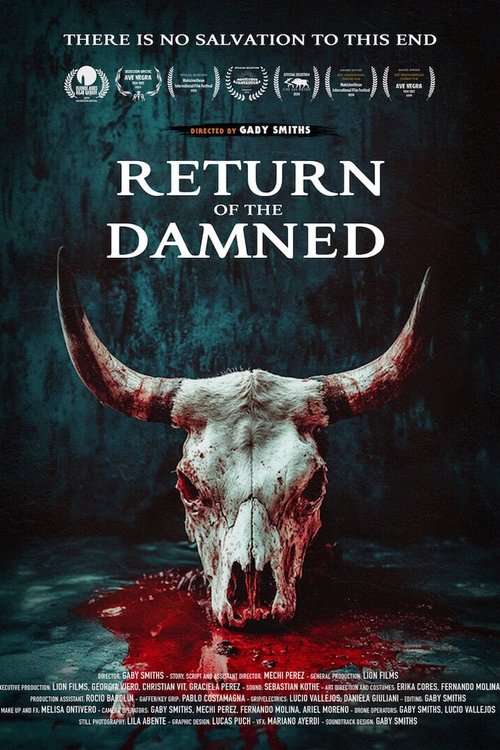
Ask Your Own Question
What is the plot?
The film opens on the night of the 1978 FIFA World Cup Final between Argentina and the Netherlands. Streets in Buenos Aires hum with radios and televisions; neighbors crowd windows and bars to follow the match under the military dictatorship that runs the country. Inside a modest, dimly lit apartment, a group of young people watches the broadcast together. Men wearing plain clothes and black balaclavas smash through the apartment door without warning. They shout orders, swing rifles, and shove the occupants to the floor. The intruders bind wrists with rough rope and cuff the mouths of anyone who screams. They photograph faces under harsh light, stamp identification numbers on forearms, and drag the young men and women into unmarked trucks while the television continues to play the commentators' excited voices in the background.
The kidnappers do not speak like criminals; they move with the procedural efficiency of soldiers. Captain Ricardo Álvarez, a broad-shouldered officer in a dark uniform, supervises the operation from the back of the truck. Lieutenant Miguel Morales stands at his side, clipboard in hand, katty-corner from Sergeant Antonio Peña who keeps his rifle aimed at the captives. Dr. Elena Ruiz, a civilian medico present to record confessions, adjusts her glasses as the convoy cuts through the empty industrial quarter and stops before a long, low brick complex guarded by two sentries. The abduction ends when they haul the captives into a high-ceilinged hall that has been repurposed as a clandestine detention center. Fluorescent tubes buzz above a line of metal cots and bare interrogation chambers. A sign on one door advertises a former tannery; beneath it, a sliding metal gate secures the facility.
The officers march the captives through corridors with doors that lock on the outside. Captain Álvarez orders them stripped to underclothes, patted down, and photographed for file. Lieutenant Morales reads a long list of charges aloud--seditious activity, conspiratorial assembly--but the detainees answer with cramped silence. Among the prisoners are Mateo, a lean twenty-year-old with a crooked jaw who watches everything; Ana, a woman in her early twenties with a tattoo of a circle on her palm who speaks softly to herself; Tomás, an older man with a shaved head and a deep scar across his cheek; Lucía, a teenager who keeps blinking as if listening to a sound only she hears; and Diego, a tall man with broad shoulders who takes a protective position near the younger ones. The officers assume these are dissidents, and they plan standard interrogation techniques to break them.
In the first interrogation room, Captain Álvarez and Dr. Ruiz begin methods that range from threats to physical abuse. Morales unrolls photographs and shoves them under a light; Peña administers electric shocks through metal clamps. At a desk, the officers assert control, demanding names of co-conspirators and addresses of safe houses. The detainees respond with recitation of phrases that the captors interpret as refusal to cooperate. They deny having political affiliations, repeating instead a pattern of words and humming a low chant that prickles the skin of anyone who listens. When Mateo refuses to answer further questions, Peña ties him to a chair and applies electrodes; he slaps the man's face until his cheekbones split open. The interrogation escalates into sustained physical torture, used by the officers to force confessions.
As the abuse intensifies, small anomalies begin to appear. In one cell, Ana traces a symbol on the concrete floor with her fingertip while murmuring in a language the officers do not recognize. The fluorescent lights hike and dim; the overhead panels vibrate in a way that makes the hairs on Morales's arms stand up. A guard reaches for a radio but the batteries die in his hands. At first the captors blame technical failure, but the phenomena grow more specific. Prisoners in separate cells begin repeating the same chant at precisely the same time, and the air itself seems to hum with a low frequency. The electrical systems of the detention center begin to short circuit; a bank of monitors flickers from static to clear images of the match being broadcast in the city. Captain Álvarez smashes a monitor and orders the power brought back, convinced the detainees have hidden transmitters. Dr. Ruiz scribbles notes on an evidence sheet: "hyper-synchronized vocalizations."
The officers try conventional methods to regain control. They isolate each captive in single cells, deny food, and stage mock executions. Morales intimidates Lucía, pressing the barrel of his pistol to her temple and pulling the trigger to produce only blank noise that startles her into hysteria. When Peña executes a perceived leader among them--he drags Tomás out to the yard and shoots him in the chest while the others watch through a slit--the officers believe they have crushed resistance. They drag Tomás's body back into the main hall and lay it on the concrete, declaring him dead. They expect the others to break.
Tomás, however, does not remain still. As Peña prepares to drag the corpse into a storage room, the body's hand claws at the guard's sleeve and the dead man's eyes open with a white, unfocused glare. Tomás pushes the guard away with unnatural force. A sudden surge of movement spreads like a contagion: Lucía's scream warps into a choir of layered voices, Ana's whispered sigils swell into a command that vibrates the air. The guards stagger, gripping their ears. Morales fires a series of shots into a cell door that slams magnetically, but the bullets ricochet when they hit a body that seems to bend light around it. Peña is hurled backward and impaled against a rebar skeleton of a nearby wall; the bar pierces his sternum, and he dies choking on blood as the officers watch, unable to pull him free under the pressure of the phenomena.
The imprisonment turns into a scene of escalating horror. The detainees begin to act not as victims but as conduits for something else. They chant in voices that split and multiply, and shadows crawl along the walls with no discernible source. Dr. Ruiz, who watches with clinical curiosity, records the gestures Ana makes; she recognizes patterns that resemble ritualized movements. When she approaches to examine the detainees more closely, the air changes temperature and her pen freezes in her hand. She stumbles back and then collapses, convulsing as if something reaches into her mind and plucks out a memory. The officers rush to her aid, but a pair of hands--thin, shiny as coal-black roots--emerge from underneath the table and wrap around Lieutenant Morales's ankle. He tumbles to the floor, and the hands tighten. Within seconds, they constrict until bone snaps and Morales makes no sound as he dies.
The surviving soldiers attempt to set the compound on fire to cleanse it. Captain Álvarez orders flamethrowers and kerosene. He and a squad set up cans and light a line of petrol to the main door in an attempt to smoke the detainees into surrender. The prisoners, however, do not behave like ordinary humans under threat of flame. Ana walks calmly into the corridor as fire begins to lick the doorway and puts her palms against the brick. Black smoke swirls toward her and then organizes into a human-shaped figure that mimics a soldier's uniform and then dissolves into embers. The flames climb the ceiling and then retreat into an invisible seam, leaving scorch marks shaped like-scripted sigils. Captain Álvarez orders a retreat and calls for reinforcements, but the radios give only the same low frequency hum and the distant roar of the stadium crowd reaching a fever pitch as the final minutes of the match conclude.
Reinforcements do not arrive from the outside; instead, the center releases more reality-altering effects. The detainees begin to escape their cells. Mateo breaks his bonds by bending the metallic cuffs with a twist of his wrists that strains tendons and splinters bone. Diego plunges a sharpened spoon into a guard's throat when the man approaches to deliver food. The spoon disappears into the man's mouth as if the blade finds a thinness in flesh; the guard collapses with his blood pressed out into patterns on the floor. The other captives use kitchen knives to pry open a service hatch and flood the corridor with the smell of bleach and boiling water. They move with a coherence that looks like a prearranged plan, but their eyes are cloudy, their mouths full of names and numbers that do not belong to anyone in the room.
Inside a subterranean chamber beneath the detention center, the captives open a rusted manhole and reveal a circular stone floor covered in concentric carvings. The air here is cool and smells of damp clay. In the center stands an altar with a blackened bowl. Ana kneels and places her palm over the bowl; it fills with a viscous liquid that resembles ink. She speaks a sequence of words and slaps the liquid onto the concrete, where it traces the shape of an open mouth. Tomás, whose wounds should have killed him, stands and presses his other hand into the pattern, and the pattern brightens like a wound reopening. Dr. Ruiz regains consciousness and crawls toward the altar; she reaches out to stop them, but a tendril of darkness snakes from the bowl and wraps around her wrist, dragging her forward. She screams once and then the darkness closes around her face. She dies when the bowl's contents siphon the air from her lungs.
As the captors try to regain authority, Captain Álvarez confronts Ana at the edge of the chamber. He accuses her of summoning something in league with the enemy; she answers in a language he cannot parse. She lifts her head and looks at him with an expression that is neither triumphant nor frightened--she seems to register him only as a variable in a larger operation. Álvarez reaches for his rifle and fires, but the bullets change trajectory midair, curving away from Ana and striking two men who had come to shoot: a sergeant and a corporal. Both men fall, their faces frozen into astonishment. The gunfire seems to feed the phenomenon rather than stop it.
When Colonel Emilio Ortega, the man who oversees the detention program, arrives with a small cadre of officers, he expects humiliation and a quick clean-up operation. Instead he finds his men dead or raving, the rooms rearranged into grotesque tableaux, and the detainees standing together as if they had been waiting. He moves to retake control with both brash threats and bribes, offering leniency for confessions, but Ana rejects every offer. Colonel Ortega strides into the sub-basement and discovers a mural painted on a wall that shows the outline of the city with a pattern of symbols connecting the stadium to the detention center. He orders the murals covered and begins to devise a plan: he will extract the detainees, smother the rituals, transport the cult and the altar out of the city, and bury the whole thing in the desert. He speaks as if he can govern shapes he cannot perceive, and the detainees smile ever so faintly.
The colonel organizes a convoy to move the captives that night, intending to take them to a secret Army facility. He chains them, loads them into trucks, and instructs his soldiers to strip the manhole altar so it cannot be reassembled. The convoy rumbles through back roads beneath a full moon. Twenty minutes from the detention center, the first truck goes silent. The drivers slump over their steering wheels as an external wave of pressure snaps the brakes. In the darkness, an indistinct shape drops onto the cab of the lead vehicle and leaves strange gouges on the steel. The soldiers try to cut the locks, but the chains are suddenly fused to the metal with a black substance. A young corporal named Ramírez yells and then collapses as something compresses his chest. The colonel orders an immediate retreat; he turns his vehicle around and orders the men back to the center, but the convoy does not respond. The trucks begin to move without drivers, as if pushed by hands beneath the chassis. They speed straight into the Río de la Plata and sink like stones, their headlights disappearing and the oil forming a black sheen on the water's surface.
Back at the center, the survivors divide. Captain Álvarez seizes a shotgun and barricades himself in the main office. He instructs anyone who will listen to form a firing line. A group of soldiers, driven by fear and anger, gather improvised weapons and set out to hunt the detainees through the warehouse's twisting halls. The captives split into pairs and groups, some moving with the intention to escape, others to complete the ritual they have begun. Diego and Mateo move toward the roof, intending to reach the street and throw themselves into the tide of people still watching the match on television screens. Lucía moves down to the basement toward the mural, chanting under her breath.
Battle erupts in three separate confrontations. In the loading bay, a pair of soldiers find Ana and attempt to drag her out. She reaches into her coat and pulls out a small metal talisman that hums like a wasp's wing; when she throws it against a wall it opens like a mouth and emits a pitch that ruptures eardrums. The soldiers clutch their heads and rush blindly into a pallet of stacked crates, which collapses and crushes them. On the stairwell, Mateo fights two officers hand-to-hand, breaking necks and driving a broken broom handle through a man's throat to stop him. On the roof, Diego leaps to the adjacent building to create distance and falls through a skylight, impaling himself on jagged glass as he lands in another room; the fall kills him on impact. His blood splatters a mural of a crescent; the stain blossoms into a black star.
Colonel Ortega, realizing that conventional warfare will not win, attempts a different tactic. He summons Father Gonzalo, a chaplain who has shown him devotion in private for years, and orders him to exorcise the detainees. Father Gonzalo enters the main hall with a Bible and a rosary and begins to read prayers aloud, his voice shaking. The detainees gather and reply with the same layered voice, and the two sounds clash. Suddenly the pages of the Bible blacken and curl as if burned by an invisible flame. Reverend Gonzalo collapses, foaming at the mouth, and then screams until his throat tears. The colonel holds a pistol to his own temple, considering suicide, but he cannot bring himself to pull the trigger; instead he aims at the altar hoping to destroy it. He fires multiple shots into the bowl at the center of the stone circle, and the bullets ping off as if hitting glass. A shard flies out and slices his cheek; he steps back and meets Ana eye to eye. She reaches toward the colonel and presses her hand against his brow. He shudders, convulses, and walks slowly into the adjoining room until he collapses in silence.
The ritual advances in a final, violent crescendo. Ana places both palms on the stone and sings in the unknown tongue. The hidden force coalesces, visible now as a black, pulsing void that rises above the altar. It sucks in sound and light; the fluorescent tubes go out in a chain reaction. The center of the void opens like a throat and will become a hole into which any human can vanish. The detainees step forward in turn and lay their hands against the rim. One by one, they are not consumed but transformed: Mateo's skin tightens and splits into a web of black lines; Lucía's eyes go milky white; Tomás smiles and kneels before the opening then steps into it, disappearing as if passing through a curtain. Some who touch the edge are flung backward, dead before they hit the floor. The room that contains the altar warps, the walls curling like pages.
Captain Álvarez, grasping that the object is beyond anything he knows to kill, decides to destroy the facility entirely. He wires canisters of fuel to the support beams and sets timers on detonators. He plans to demolish the building and bury whatever power it contains. As he floods his shirt with sweat and works the final wires, Ana senses the threat and accelerates the ritual. She reaches into the void and pulls out a tendril that looks like a child's arm made of shadow. The tendril shoots across the room and wraps itself around Álvarez's throat. He staggers with his hands clawing at his neck until his fingers tear off. He raises the detonator toward the void, preparing to kill them all. Before he can press the switch, Tomás--back from wherever he has been--rushes him from behind and slams a metal pipe into his skull. The blow kills Álvarez; the detonator falls to the floor and clicks under the pressure of an ambient movement, dislodging a battery and silencing the planned explosion.
With the facility now fully under the influence of the cult, the detainees split. Many step willingly into the void and vanish. A handful do not. Mateo and Ana remain at the altar: Mateo with his jaw clenched, blood drying on a hand where he had tried to stop his own wounds; Ana with an expression that looks like grief and calculation all at once. She reaches for Mateo and tells him, in a voice that is now all voices layered, that they have opened a door that cannot be closed except with a sacrifice. Mateo answers by grasping a shard of metal at the rim and plunging it into Ana's chest. He collapses, bleeding, and then moves to press his own body against the stone as the void widens. He sacrifices himself by shoving his torso through to keep the hole from swallowing more. The void seems to digest him, inch by inch, until only his head is left. He blows a breath in Ana's face before she lets go of his hand and the void snaps shut, leaving only a scorched smear where his body disappeared.
When the void collapses, the detention center shudders as if a quake has passed through it. The remaining occupants are lying in pools of blood and broken bone. Tomás kneels in the center and begins to laugh in a small, strangled voice. A few detainees, including Lucía, stand with blank faces and walk toward the ruined manhole. They climb out into the night and vanish into the city's alleys, while small fires gutter in the rooms they've just left.
In the final scenes, the camera follows two survivors. Dr. Ruiz, barely alive, sits on a cot and draws a small symbol on a paper she covers with a blanket. Her hand trembles. Colonel Ortega lies at her feet, blind and mute, and his chest barely moves. He coughs up blood and tries to apologize, but no words come. Captain Álvarez is dead, Morales is dead, Peña is dead; the list of officers killed is written across the walls in dried blood. The authorities eventually arrive the next morning--men in uniforms who carry clipboards and cameras. They cordon off the warehouse and declare the incident a tragic escape by subversives. Soldiers cart away bodies and catalog the wreckage. They do not find the altar; all registers of it are blackened into the concrete. The chaplain's Bible is reduced to a single charred page.
Lucía, Ana's presence having been consumed, walks through the city and stands before a newspaper kiosk where the headline proclaims Argentina's victory in the World Cup. She touches the printed photo of the crowd and then moves on. In the final frame, Dr. Ruiz, sedated and bandaged, watches the television in the hospital ward as children parade flags in the streets. She catches a glimpse of a small, unmistakable symbol--one that matches the mark she saw in the sub-basement--painted on a wall in a distant neighborhood. She tries to lift herself from the bed to reach it, but her body will not obey. A nurse adjusts her blanket, and the camera pulls back to reveal the detention center demolished and cordoned off, the city continuing its celebration beneath an unnatural calm. The film ends with the last image of a small, dark smear on the side of a newspaper billboard--the same black mark that was in the bowl--wet and glistening as if it is still breathing.
What is the ending?
The ending of the 2024 film 1978 depicts the torturers, who initially abducted a group of young people for interrogation, becoming overwhelmed and ultimately destroyed by the supernatural cult they mistakenly captured. The clandestine detention center descends into chaos and hellish violence, with the captors falling victim to the dark forces unleashed by their prisoners.
Expanding on this, the final sequence unfolds as follows:
The film's climax takes place inside the clandestine detention center where the torturers--led by the gruff Moro and the more cheerful Carancho--have been interrogating the young captives. Initially, the torturers believe they have captured political dissidents, but as the interrogation progresses, it becomes clear that these prisoners are part of a sinister cult connected to a supernatural evil.
As the torturers intensify their brutal methods, the cult's dark power begins to manifest. The atmosphere grows increasingly oppressive and surreal, with eerie supernatural occurrences disrupting the torturers' control. The captors, once confident and dominant, start to experience fear and confusion as the cult's influence spreads.
One by one, the torturers fall victim to the cult's wrath. The film portrays this descent with graphic and grotesque imagery, emphasizing the shift from human cruelty to otherworldly horror. Moro and Carancho, the main torturers, face violent and terrifying ends, overwhelmed by forces beyond their understanding.
The detention center itself becomes a nightmarish hellscape, symbolizing the collapse of the torturers' power and the triumph of the supernatural evil they inadvertently unleashed. The young cult members, though initially prisoners, emerge as agents of this dark force, turning the tables on their captors.
By the film's conclusion, the surviving characters are either dead or consumed by the supernatural chaos. The story closes on a note of bleakness and horror, underscoring the futility of the torturers' cruelty and the presence of a malevolent force far greater than human evil.
In summary, the ending shows the torturers' downfall at the hands of the cult's supernatural power, with the detention center transformed into a scene of hellish destruction. Moro and Carancho, the main torturers, do not survive, and the cult's dark influence prevails, leaving no clear survivors among the main characters involved in the final conflict.
Is there a post-credit scene?
The movie titled 1978 (2024) does not have any information indicating the presence of a post-credit scene. Available sources describing the film focus on its intense political and horror themes, with no mention of additional scenes after the credits.
The film, set during the 1978 World Cup final amid Argentina's military dictatorship, centers on a group of torturers kidnapping the wrong group of young people, leading to brutal interrogations and a descent into madness and horror. The narrative and tone are described as grim and complex, with a focus on moral ambiguity and psychological terror, culminating in a disturbing climax. The credits roll after this intense finale, leaving the audience to reflect on the nature of the horror and humanity itself, but no post-credit or after-credits scene is noted.
In summary, 1978 (2024) does not include a post-credit scene or any after-credits footage. Viewers can leave once the credits begin without missing additional content.
Who are the main torturers in the film 1978 and what are their characteristics?
The main torturers include Moro, the gruff and no-nonsense boss, and Carancho, a cheerful, overweight operative. They are part of a death squad tasked with kidnapping and interrogating dissidents during the 1978 military dictatorship in Argentina. Moro is portrayed as the strict leader, while Carancho provides a contrasting lighter demeanor, adding complexity to their characters as they carry out brutal acts.
What is the significance of the group that the torturers mistakenly kidnap in 1978?
The torturers mistakenly kidnap a group of young people who are not political dissidents but members of a sinister, macabre cult guided by an unknown supernatural force. This error escalates the situation from political torture to a supernatural horror scenario, turning the clandestine detention center into a hellish environment.
How does the film 1978 depict the transition from political horror to supernatural horror?
The film begins with a focus on political repression and torture during Argentina's military dictatorship but gradually shifts to reveal a deeper, cosmic horror. The initial inhumane interrogations give way to encounters with supernatural evil linked to the cult the torturers have kidnapped. This transition is marked by increasing madness, chaos, and metaphysical horror, culminating in a grotesque and disturbing climax influenced by Fulci-style horror.
What role does the 1978 World Cup final play in the movie's plot?
The 1978 World Cup final between Argentina and Holland serves as a backdrop and contrast to the dark events unfolding. While the nation celebrates the soccer final, a death squad conducts kidnappings and torture in secret. The World Cup is used by the military junta to distract the public from the ongoing political repression and human rights abuses, highlighting the stark contrast between public celebration and hidden brutality.
How are the victims and captors portrayed in terms of moral complexity in 1978?
The film presents a morally ambiguous narrative where neither victims nor captors are entirely innocent. The political activists initially seem righteous but harbor dark secrets linked to the cult, while the torturers, though sadistic, appear to be following orders from a greater, possibly supernatural, force. This ambiguity creates tension and uncertainty about who to fear or sympathize with, emphasizing complicity and the blurred lines between good and evil.
Is this family friendly?
The 2024 horror movie 1978 is not family friendly and is rated for viewers aged 16 and older due to its intense and disturbing content. It contains severe violence and gore, including scenes of brutal torture, abduction, and supernatural horror elements. The film depicts graphic and unsettling scenes of physical brutality and psychological terror, which are likely to be upsetting for children and sensitive viewers.
Potentially objectionable or upsetting aspects include:
- Severe violence and gore: Graphic torture, violent abductions, and intense scenes of physical harm.
- Frightening and intense scenes: The atmosphere is claustrophobic and filled with dread, with sudden shifts to brutal violence.
- Profanity: Severe use of strong language throughout the film.
- Mild sexual content and nudity: Present but limited.
- Themes of political terror and military dictatorship: The film is set during Argentina's 1978 military dictatorship and involves dark political and supernatural themes that may be disturbing.
Given these elements, 1978 is intended for mature audiences and is unsuitable for children or viewers sensitive to graphic violence, torture, and intense horror.

